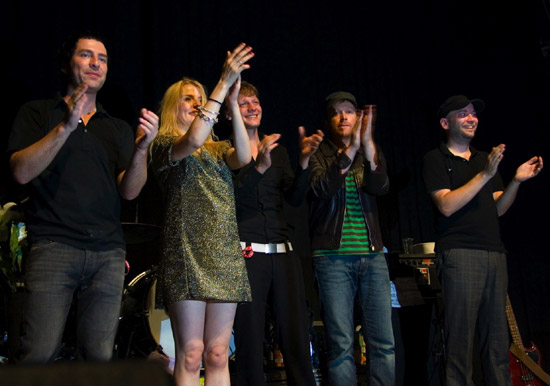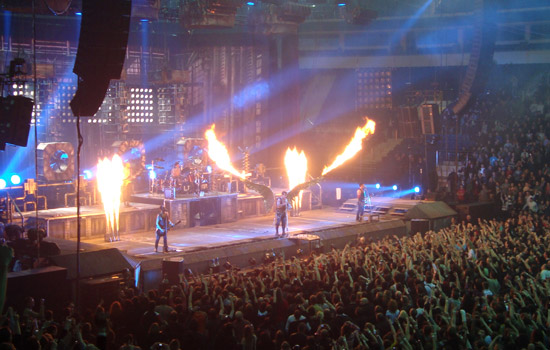Music: Modern Forms
Rock, Punk, and Electronic
A genre of experimental music in the late 1960s and 1970s, Krautrock includes elements of post-psychedelic and progressive rock as well as free jazz and contemporary classical. Groups like Tangerine Dream, Neu!, Can, and Kraftwerk often employ a 4/4 time signature with guitar, bass, drums, and electronic effects.
Neue Deutsche Welle (New German Wave or NDW) was a fusion of New Wave and British punk rock in the early 1980s that spurred later genres like electroclash, electronic body music (EBM), and dance-punk. NDW, sung entirely in German, is exemplified by artists like Joachim Witt.
Ostrock (a more conservative subgenre of Krautrock) groups like The Kudhys were popular at around the same time in East Germany. Deutschpunk bands from the 1980s such as Slime used fast rhythms and left-wing lyrics, as did Schleim-Keim from East Germany.
In the 1980s and 1990s, Hamburger Schule groups such as Blumfeld mixed experimental pop, punk, and grunge, solidifying acceptance of the German language in pop songs. During the same decades, bands like Scooter defined genres of trance such as anthem, progressive, and ambient. Today electronic rock artists like Wir sind Helden and Klee remain popular.
Metal and Industrial
The Scorpions played hard rock that planted the roots for Germany’s heavy metal scene. Epitomized by groups like Rammstein, Neue Deutsche Härte (New German Hardness) is a genre of industrial metal fusing German hard rock, groove metal, electronic music, and techno. Mittelalter-Metal or Mittelalter-Rock (Medieval Metal or Medieval Rock) uses folk and traditional instruments, like the bagpipes and lute, as well as typical metal instruments to mix folk with heavy metal. Speed metal led to power metal groups like Blind Guardian.
Hip-Hop
American artists inspired German rappers, who at first sang solely in English until groups like Die Fantastischen Vier (The Fantastic Four) and Advanced Chemistry popularized using German. Like the Turkish gastarbeitern, hip-hop artists were often immigrants who embraced the genre as a way to form an identity in a foreign country.
First thriving in Munich and then Berlin, Turkish hip-hop was an attempt to construct a strong Turkish identity in Germany, arising from a sense of alienation and estrangement among Gastarbeiter groups—particularly the generations born in Germany—who felt they did not truly belong in either country. Turkish hip-hop artists choose not to rap in German (or in English, the dominant language of the genre internationally), but rather in Turkish. Groups such as Cartel produced songs like “Türksün” about the young immigrant experience in Germany. A subgenre of Turkish hip-hop spurred by groups like King Size Terror, Oriental hip-hop developed as a form of protest against and social commentary about racial discrimination.
Folk and Klezmer
Ougenweide is a folk band that plays minnesongs with modern instruments. Klezmer thrives in Germany today, ironically played mostly by German artists. Beginning in 1986 and now broadcast to millions, the Grand Prix der Volksmusik is an annual competition pitting regional folk musician groups throughout Germany against one another to determine the country’s best ensemble.
Article written for World Trade Press by Jen Shipon.
Copyright © 1993—2025 World Trade Press. All rights reserved.

 Germany
Germany 
